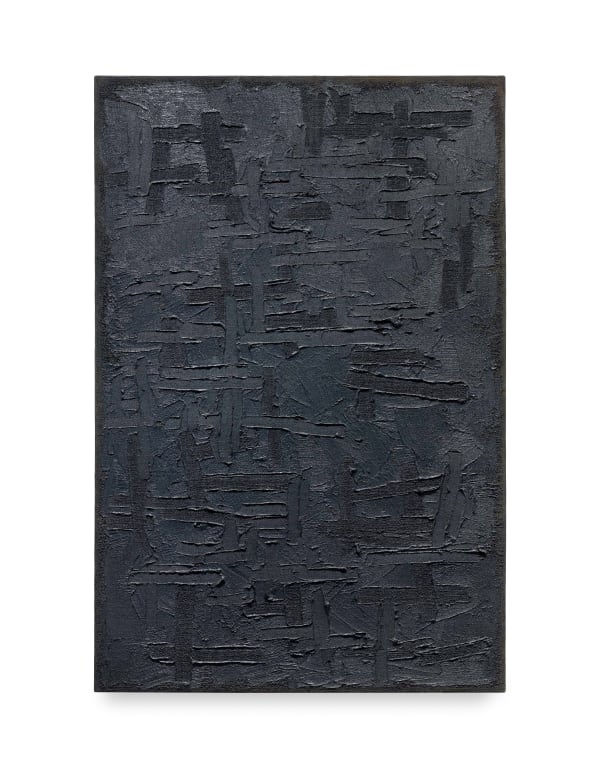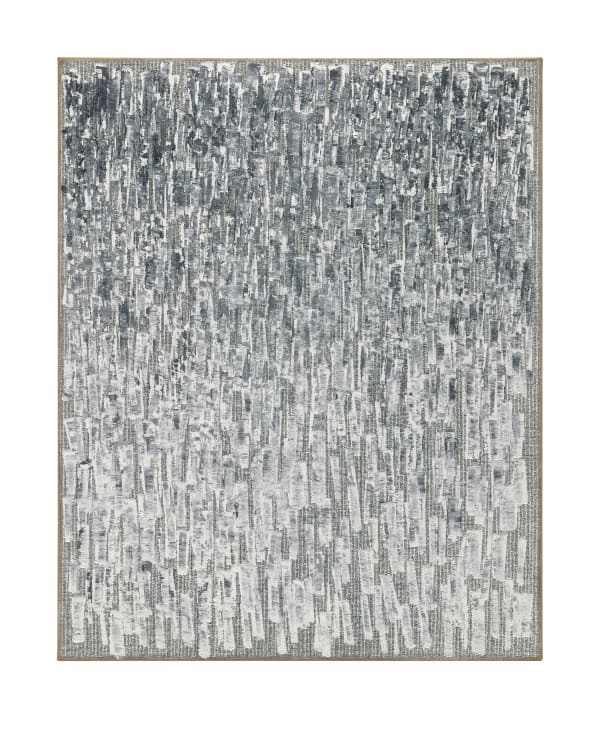-
Tina Kim Gallery is pleased to announce Ha Chong-Hyun: 50 Years of Conjunction, a solo exhibition presented on the 50th anniversary of the artist’s widely celebrated Conjunction series. On view from November 7 - December 21, 2024, the exhibition will highlight major works from this signature series as it developed from 1974 to the present and will celebrate the artist’s enduring exploration of painting’s material possibilities.
-
-
Beginning with the first works made half a century ago, the essential act of the Conjunction paintings is the pushing through of oil paint from the back to the front of the artwork, so that the weave and texture of the burlap fabric becomes inextricably interwoven (or “conjoined”) with the oil. Ha’s use of burlap originated from resource constraints (burlap was an easily accessible fabric, used in army sandbags and American grain shipments after the Korean War) and from his explicit desire to work with “objects from the ruins of war”. Letting the properties of the material dictate his gestures, rather than the reverse, Ha made the first Conjunction paintings by stretching hemp over the four legs of an upturned table, and pushing paint through the loose weave of the fabric to bubble and drip over the roughly textured fibers on the other side.
-
-
Conjunction arose during a critical period of rapid industrialization and urbanization in Korea, following the end of 35 years of Japanese occupation, the Korean War, and the establishment of the Demilitarized Zone between North and South Korea in 1953. Without the signing of a peace treaty and a formal end to the war, nascent optimism in the 1960s and 70s was dampened by an extended military regime that imposed strict censorship and harsh anti-communist governance. Without the freedom to protest aloud, Ha Chong-Hyun turned to abstraction as a form of silent demonstration, using the physical method of his practice and the laborious pushing of paint to express a deeply felt resistance that could not be stated explicitly. Other artists of his generation such as Park Seo-Bo, Lee Ufan, and Kwon Young- Woo expressed a similar interest in materiality and restraint, eventually coming to be known as the Dansaekhwa movement, now seen as one of the pillars of Korean modernism.
-
-
Ha’s interest in the monochrome rejected minimalism’s penchant for the smooth and seamless, always leaving evidence of his mark making across the surface. Conjunction also marked a clear departure from his early Informel period, as well as White Paper for Urban Planning, a series of brightly colored geometric abstractions that were in dialogue with an international interest in the vocabulary of line and form. The Conjunction paintings rejected the central premise and tools of painting entirely, using rudimentary hand-made tools to push and scrape his paint through the fabric, rather than daub and spread onto the surface. Early works from the series drew from the colors of everyday life in Korea, including hues from paper, ceramics, earth, traditional roof tiles, and hemp. His contemporary Conjunction works are highly gestural, vivid, and expressive, evolving the artist’s continued devotion to experimentation and inquiry in painting.
-
Featured Works
-

![]() 525 West 21st Street, New York, NY 10011 T 1‑212‑716‑1100 info@tinakimgallery.com
525 West 21st Street, New York, NY 10011 T 1‑212‑716‑1100 info@tinakimgallery.com
Facebook, opens in a new tab.
Instagram, opens in a new tab.
Youtube, opens in a new tab.
Artsy, opens in a new tab.
Ocula, opens in a new tab.
Copyright © 2025 Tina Kim Gallery
This website uses cookies
This site uses cookies to help make it more useful to you. Please contact us to find out more about our Cookie Policy.
Join our mailing list
* denotes required fields
We will process the personal data you have supplied in accordance with our privacy policy (available on request). You can unsubscribe or change your preferences at any time by clicking the link in our emails.



















